Briefly discussed in this post: 5 books (one on apocalyptic stuff, another Sebald, dipped my toes into Lovecraft, failed to empathize with Didion, but smiled through Tiqqun); 2 movies (artsy French thing and indie thriller thing) and 6 documentaries (mixed bag of nuts here… with emphasis on the word nuts…).
Books
1. Apocalypse Against Empire: Theologies of Resistance in Early Judaism by Anathea E. Portier-Young.

Perhaps one of the reasons why my thesis has taken so long to write is that I go to a book intending to read just a chapter or skim parts of it but then then whole thing ends up being so interesting I can’t put it down and then I end up reading it cover to cover. This book was one of those books. A great overview of apocalyptic theologies, narratives, histories, and, perhaps most importantly, calls to action. Because that is something that has always baffled me about the recent resurgence of interest into apocalyptic matters, especially in relation to Paul–they’re all so heavily theoretical and rooted in academia and don’t have boots on the ground or any ideas for those living out their resistance to empire in experimental or subversive or revolutionary ways.
2. The Emigrants by W. G. Sebald.

I’m reading everything by Sebald. This was the next one on my list. I liked it. If you want to read Sebald, too, I suggest starting with Austerlitz. Holy moley.
3. The Lurker at the Threshold by H. P. Lovecraft with August Derleth.
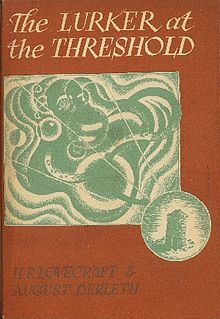
I wanted to read something non-taxing and fun that would take me away from the world of all the tasks and heavy thinking I have to do elsewhere. So, I finally indulged in some Lovecraft. I’m glad I did. It reminded me of the fun and shivers I had reading Agatha Christie (And Then There Were None still stands out in my memory), or Arthur Conan Doyle’s Sherlock Holmes (A Study in Scarlet being another stand out) when I was a kid. Only there are more tentacles in the Lovecraftian world. And necromancy. In other words, it was a lot of fun (even if it entertained me slightly too much and caused me to blitz my way through it rather than simply dipping in and out of it as during breaks from my work) Oh well. Iä! Iä! Shub-Niggurath!
4. The Year Magical Thinking by Joan Didion.
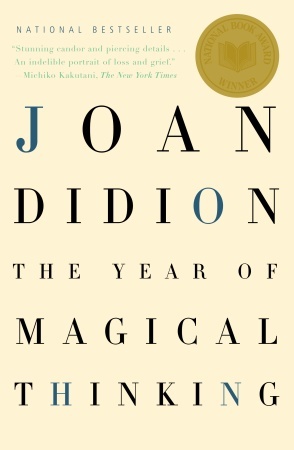
Rich and well-connected person struggles to accept that she can’t have everything she wants, even though she is rich and well-connected (especially when the things she wants are the lives and health of others). The reader is bound to wonder if wealth and connections are why this book won the National Book Award.
Alternatively: a personal narrative wherein the author struggles to understand what it means to live after the death of her husband (at a time when her daughter also very nearly died), while simultaneously managing to name-drop a lot of people and mention the brand of the runners she got when she was worried about falling, the kind of airplane she flew on to Europe in the ‘90s, and the name of the no-longer-available-for-purchase dinnerware she put out the Christmas after her husband died.
Alternatively: a novel that bothered me a great deal because I went to it expecting to feel all the feelings but walked away feeling quite cold and this left me wondering about what all might be wrong with me.
5. Introduction to Civil War by Tiqqun.
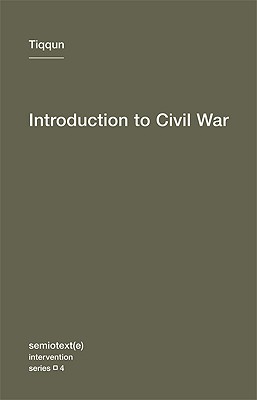
I finished this book at the very beginning of February. I remember thinking it was a lot of fun.
Movies
1. Le Mépris (1963) directed by Jean-Luc Godard.
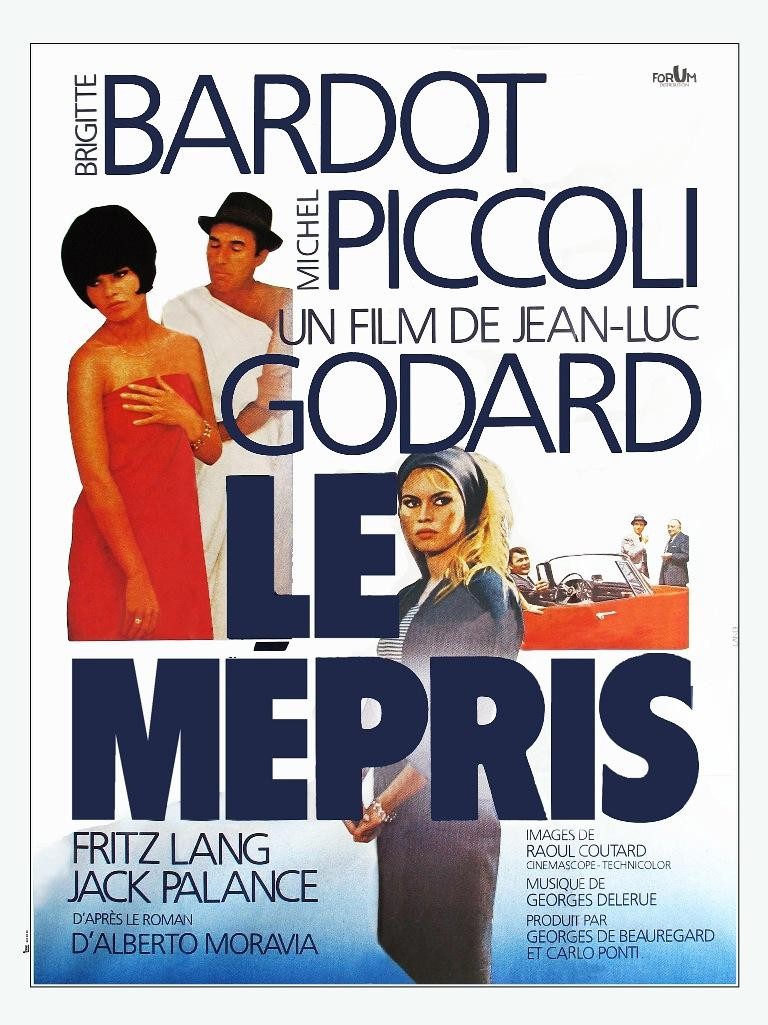
It’s clever and multi-layered and the kind of text that easily allows clever, multi-layered people to say clever, multi-layered things about it and with it… but I’m not sure if it has any substance. In other words, it’s art. It’s literature. It’s the Superbowl for people who play games with modes of representation.
2. Spring (2014) directed by Justin Benson and Aaron Moorhead.

This was a close but not quite and the not quite mattered quite a bit. I thought the ending was terrible and the monster was better left hidden or only glimpsed in part (I’m a big fan of the whole only glimpsing things in part these days–the unspeakable speaks for itself and the range of what I think we can re-present in language is becoming increasingly narrow). I did enjoy the rambling beginning, the slow-ish roast of it all, and the way in which the way is paved for a more critical understanding of the protagonist than the protagonist himself seems capable of. Oh, and the scenery was beautiful, too. Nice scenery seems to be a thing in these indie horror thrillers.
Documentaries
1. Kate Plays Christine (2016) directed by Robert Greene.

Pretentious, contrived, and overacted (most especially when people were just being themselves), I think this may have been the most overrated film of 2016. The way it builds up to Kate/Christine shooting herself in the head/not shooting herself in the head, and what that is supposed to make the audience asking itself about itself is so over played that it immediately made me regret watching the whole thing (which I was already kinda doing but trying not to). If you want to ask yourself the questions this documentary tries to inspire, just watch Martyrs (but, seriously, don’t watch Martyrs) or listen to any of the conversation that has been going on about horror movies for the last twenty years.
2. The Unknown Known (2013) directed by Errol Morris.

Errol Morris has made a number of highly praised documentaries – notably, Fog of War, wherein Morris engages Robert McNamara about his role in the Vietnam war (it’s a great doc, if you haven’t seen it). Morris tries to do the same, here, with Donald Rumsfeld but with less success. Or, perhaps I should say, with entirely different results. In Fog of War, one felt like cracks were appearing all over McNamara… morality was a thing and it was a problem and maybe there was a conscience there that was troubled (but heavily repressed)… but in The Unknown Known, Rumsfeld never cracks. He’s smooth (even affable – I was surprised by how much he charmed me) and you get the impression that he sleeps well at night. And that maybe he agreed to do the documentary simply to show that he can succeed (in more ways than one, perhaps), where McNamara failed.
Originally, the documentary feels surprising in what could be a disappointing way. Morris never really pushes Rumsfeld too hard on his business connections (key to his time prior to joining Bush 2’s administration and key to what ended up playing out in Iraq), or on the whole you’re-a-lying-sack-of-crap-war-criminal thing (the only time I thought Rumsfeld came off looking really bad was, paradoxically, when he managed to squeeze out a few tears for an American soldier who survived serious injuries in Iraq – you’d have to see the scene to understand why). Basically, Rumsfeld runs away with it and, at first, it feels like Morris is letting Rumsfeld do so. But, afterwards, the whole thing kinda gets under your skin and you can’t stop thinking about it – Rumsfeld’s boyish smile, his endless memos (“snowflakes”), his world of words and definitions, his power struggles (Bush 1 was his rival earlier on and pulled a bit of a coup to work his way to the Presidency instead of Rumsfeld), his patriotism, and his simple but expensive suits. It’s disconcerting and it’s hard to put my finger on why. Perhaps, in comparison to Fog of War, one feels that McNamara has a soul, whereas Rumsfeld is a brand. But that’s not quite right either. Rumsfeld is closer to a simulacrum (so first as tragedy then as farce doesn’t apply here since there is no original that is being replicated). He is so slippery, so ephemeral, you feel that he might not even exist – even though, after two hours of watching him and listening to him, you also feel he is more solidly present (and captivating) than ever before. He’s ideology. Nothing and everything all at once.
3. Nuts! (2016) directed by Penny Lane.

It’s not every day you get a chance to watch a documentary about a doctor who would transfer parts of goat testicles into the scrotums of men who were concerned about their own virility (and then who goes on to actually be a shockingly influential person in American history even though nobody has heard of him), but if that chance does come along, you should probably take it.
4. Dark Days (2000) directed by Marc Singer.
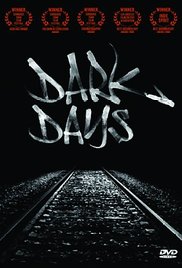
I enjoyed this documentary a lot. I almost didn’t watch it because I’m mostly done with watching documentaries about urban poverty since they tend to be exploitative along the lines of poverty porn or cheerleading for poverty pimps. I felt the subjects of this documentary – folks who live in subway tunnels underneath NYC – could easily be presented in this way but then I read that the Director actually went broke and was briefly homeless due to his investment in this project and I though, meh, I’ll check it out. I’m glad I did. I thought it did a very good job of letting people speak for themselves. I think this is a very hard thing to do with a movie camera and this kind of “shocking” living environment, but I thought Singer did a marvelous job of it. I didn’t walk always from the movie feeling horrified or saddened or anything much but happy that I felt like I saw a very human presentation of some very human people. It reminded me of the old adage from The Muppets Take Manhattan: “Peoples is peoples.” Yep, they sure is. And these peoples is peoples, my peoples is peoples, and those peoples is peoples, and we’re all peoples—nothing more, nothing less. Recommended viewing.
5. We Are The Giant (2014) directed by Greg Barker.

This movie stayed with me for quite a long time after I watched it. It was powerful and troubling and left a lot of questions without easy answers. The lives of people involved in three of the “Arab Spring” uprisings are examined — a son who joined the Libyan resistance and brought his dad along (and left his dad behind after he was killed), a man dedicated to nonviolent resistance in Syria who is devastated by the progression of events in Syria (“In Syria, nonviolence has failed” and to hear him say it, a gentle kind-hearted and devoted man, who surely believed in it will all his heart, made me weep because I know, just a little in my own way, how it feels when that dream dies and I saw its death in him, and he now lives in hiding from both the Syrian forces and militant revolutionary groups), and a family of human rights activists in Bahrain (the dad is jailed, beaten, and sexually assaulted by guards, one daughter flees the country to spread the word, the other daughter stays to resist nonviolently but she too is eventually arrested indefinitely, leaving her infant daughter behind). The stories are poignant, the people intelligent, their love is large but the hatred they face is pretty large, too. And well armed. And backed by foreign powers like the US0fA. And even when the resistance arms itself no easy solution arrives. And that’s why this movie has stayed with me. The failure of nonviolence is there for all to see. The failure of violence is also on display. It’s hard to know what can be done.
6. How to Start A Revolution (2012) directed by Ruaridh Arrow.
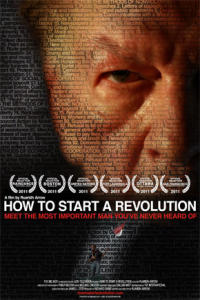
A short doc mapping out Gene Sharp’s path “from dictatorship to democracy” but Sharp’s model of nonviolence and the change it supposedly produces is a all pretty much bullshit (something We Are The Giant helps to show). This is a good doc to watch to get a sense for the kind of lies that pass as truisms within the nonviolent resistance scene. Peter Gelderloos really shreds all of this in his book, The Failure of Nonviolence but you’ll have to wait til next month for my review of that one.